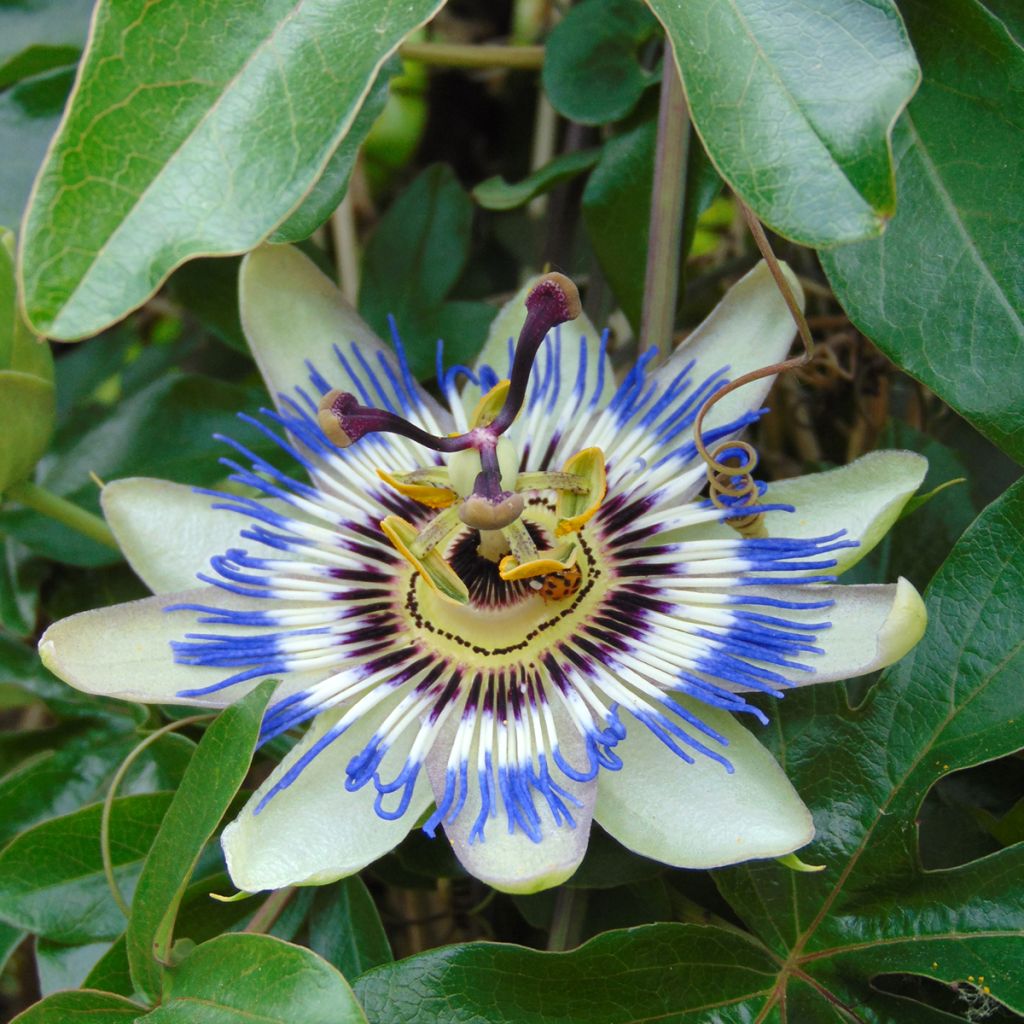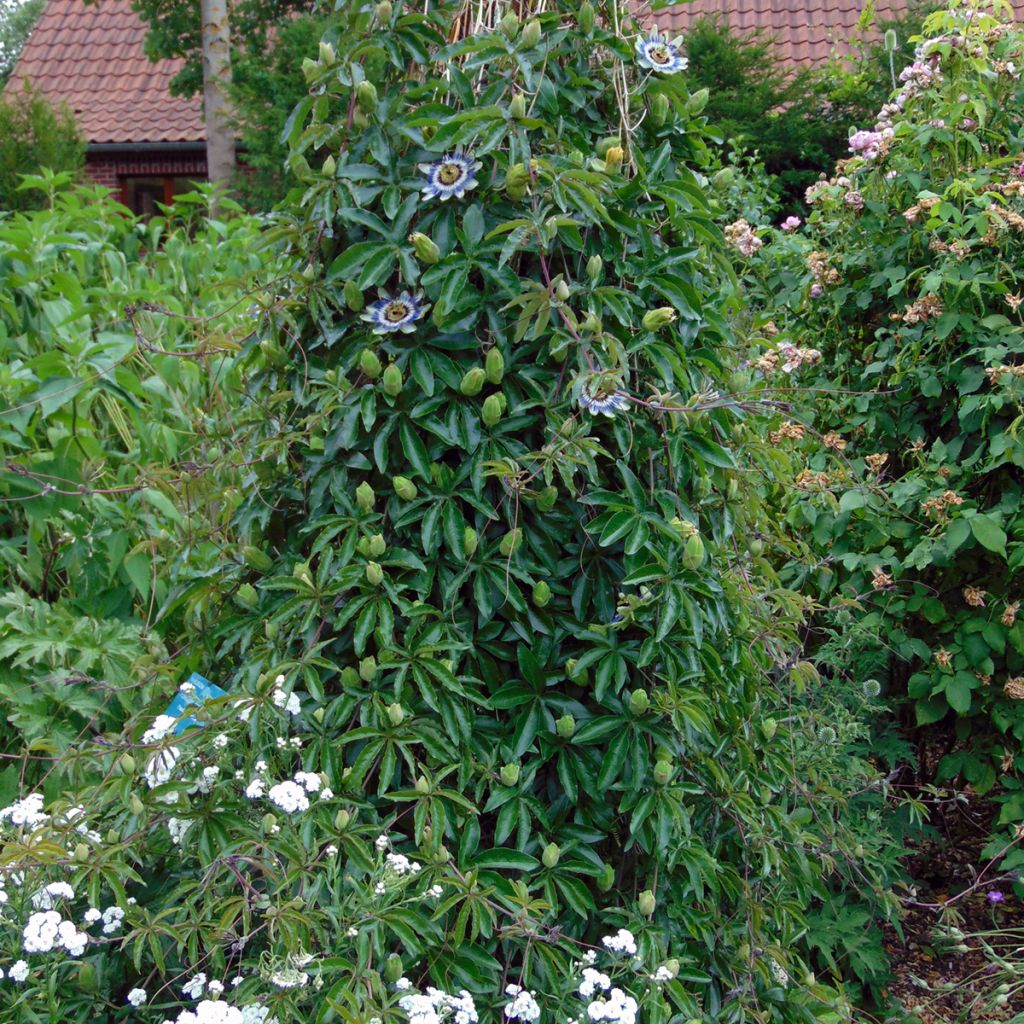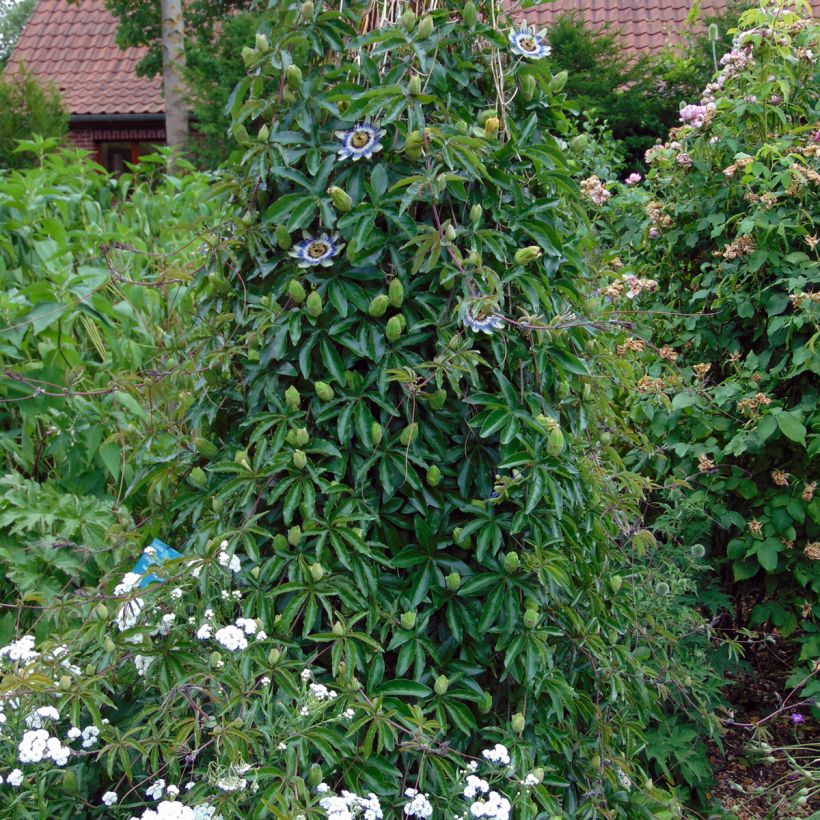Shipping country and language
Your country of residence may be:
Your country of residence is:
For a better user experience on our website, you can select:
Your shipping country:
-
Andorra
-
Austria
-
Belgium
-
Bulgaria
-
Canada
-
Chile
-
Croatia
-
Cyprus
-
Czechia
-
Denmark
-
Estonia
-
Finland
-
France
-
Germany
-
Greece
-
Hungary
-
Iceland
-
Ireland
-
Italy
-
Latvia
-
Lithuania
-
Luxembourg
-
Malta
-
Monaco
-
Netherlands
-
Poland
-
Portugal
-
Romania
-
Slovakia
-
Slovenia
-
Spain
-
Sweden
-
Switzerland
-
United Kingdom
We only deliver seed and bulb products to your country. If you add other products to your basket, they cannot be shipped.
Language:
-
French
-
German
-
Spanish
-
English
-
Italian
My Account
Hello
My wish lists
Log in / Register
Existing customer?
New customer?
Create an account to track your orders, access our customer service and, if you wish, make the most of our upcoming offers.


Passiflora caerulea seeds


Passiflora caerulea seeds
Passiflora caerulea seeds
Passiflora caerulea
Blue Passionflower, Common Passionflower, Blue Crown, Wild Apricot, Bluecrown Passionflower
Gorgeous flowers. When it takes hold, it grows well and quickly. It regrows from year to year after pruning.
Céline, 12/04/2020
Order in the next for dispatch today!
Dispatch by letter from €3.90.
Delivery charge from €5.90 Oversize package delivery charge from €6.90.
More information
This item is not available in your country.
Schedule delivery date,
and select date in basket
This plant carries a 6 months recovery warranty
More information
We guarantee the quality of our plants for a full growing cycle, and will replace at our expense any plant that fails to recover under normal climatic and planting conditions.
Seed-only orders are dispatched by sealed envelope. The delivery charge for seed-only orders is €3.90.

Does this plant fit my garden?
Set up your Plantfit profile →
Description
Passiflora caerulea, also known as passionflower or blue passion flower, is a vigorous perennial climbing plant, fairly hardy and semi-evergreen, clinging to its support with its tendrils. It produces in summer curious and fragrant flowers, quite large, in white-blue, adorned with a double collar of tricoloured filaments, blue, white, and purple, followed after a hot summer by orange, edible but bland fruits. This highly decorative climber can be cultivated in temperate regions due to its good frost resistance. It should be grown in the sun, in well-drained ordinary soil, even limestone.
The blue passion flower is a plant of the Passifloraceae family, native to South America. This evergreen to semi-evergreen climber shows rapid growth, reaching a height of 9 metres (29 feet) in mild climates, but it will not exceed 5 or 6 metres (16 or 20 feet) in cooler climates. In summer, it is adorned with beautiful round flowers, 8cm (3in) in diameter, composed of a row of white-blue petals, topped with a collar of tricoloured filaments arranged on 2 levels, purple in the centre, white in the middle, and pale blue on the outer edge. In the centre of the flower, there is a column, 8 to 10mm (0in) tall, bearing the stamens and pistil. Flowering occurs from May to June until September. It is accompanied by a gentle fragrance reminiscent of monoi. Flowering is followed by the formation of orange fruits, the size of an egg, which are edible but not very tasty.
The blue passion flower is perfect for covering fences, trellises, unsightly fences, or old sunlit walls, to the south or west. Provide it with a sheltered position from the wind. It is an excellent companion for other climbing plants. It is also possible to plant annuals and perennials at its base, or to let it climb in bushes.
Report an error about the product description
Passiflora caerulea seeds in pictures




Flowering
Foliage
Plant habit
Botanical data
Passiflora
caerulea
Passifloraceae
Blue Passionflower, Common Passionflower, Blue Crown, Wild Apricot, Bluecrown Passionflower
South America
Planting and care
Sow in a warm, sheltered place in spring: Soak the seeds for 24 hours in warm water or fruit juice. Sow your seeds in pots, one seed per pot, under 1/2cm (0/1in) of compost kept moist but not waterlogged. Then, place your pot or tray in a mini-greenhouse, at a high temperature (25/35°C (77/95°F)), near a radiator for example. Germination sometimes takes a month. Harden the plants in cooler conditions (watch out for damping off), before placing them outside in their pot or final location. In mild climate regions, this plant can become invasive.
Sowing period
Intended location
-
, onOrder confirmed
Reply from on Promesse de fleurs
Haven't found what you were looking for?
Hardiness is the lowest winter temperature a plant can endure without suffering serious damage or even dying. However, hardiness is affected by location (a sheltered area, such as a patio), protection (winter cover) and soil type (hardiness is improved by well-drained soil).

Photo Sharing Terms & Conditions
In order to encourage gardeners to interact and share their experiences, Promesse de fleurs offers various media enabling content to be uploaded onto its Site - in particular via the ‘Photo sharing’ module.
The User agrees to refrain from:
- Posting any content that is illegal, prejudicial, insulting, racist, inciteful to hatred, revisionist, contrary to public decency, that infringes on privacy or on the privacy rights of third parties, in particular the publicity rights of persons and goods, intellectual property rights, or the right to privacy.
- Submitting content on behalf of a third party;
- Impersonate the identity of a third party and/or publish any personal information about a third party;
In general, the User undertakes to refrain from any unethical behaviour.
All Content (in particular text, comments, files, images, photos, videos, creative works, etc.), which may be subject to property or intellectual property rights, image or other private rights, shall remain the property of the User, subject to the limited rights granted by the terms of the licence granted by Promesse de fleurs as stated below. Users are at liberty to publish or not to publish such Content on the Site, notably via the ‘Photo Sharing’ facility, and accept that this Content shall be made public and freely accessible, notably on the Internet.
Users further acknowledge, undertake to have ,and guarantee that they hold all necessary rights and permissions to publish such material on the Site, in particular with regard to the legislation in force pertaining to any privacy, property, intellectual property, image, or contractual rights, or rights of any other nature. By publishing such Content on the Site, Users acknowledge accepting full liability as publishers of the Content within the meaning of the law, and grant Promesse de fleurs, free of charge, an inclusive, worldwide licence for the said Content for the entire duration of its publication, including all reproduction, representation, up/downloading, displaying, performing, transmission, and storage rights.
Users also grant permission for their name to be linked to the Content and accept that this link may not always be made available.
By engaging in posting material, Users consent to their Content becoming automatically accessible on the Internet, in particular on other sites and/or blogs and/or web pages of the Promesse de fleurs site, including in particular social pages and the Promesse de fleurs catalogue.
Users may secure the removal of entrusted content free of charge by issuing a simple request via our contact form.
The flowering period indicated on our website applies to countries and regions located in USDA zone 8 (France, the United Kingdom, Ireland, the Netherlands, etc.)
It will vary according to where you live:
- In zones 9 to 10 (Italy, Spain, Greece, etc.), flowering will occur about 2 to 4 weeks earlier.
- In zones 6 to 7 (Germany, Poland, Slovenia, and lower mountainous regions), flowering will be delayed by 2 to 3 weeks.
- In zone 5 (Central Europe, Scandinavia), blooming will be delayed by 3 to 5 weeks.
In temperate climates, pruning of spring-flowering shrubs (forsythia, spireas, etc.) should be done just after flowering.
Pruning of summer-flowering shrubs (Indian Lilac, Perovskia, etc.) can be done in winter or spring.
In cold regions as well as with frost-sensitive plants, avoid pruning too early when severe frosts may still occur.
The planting period indicated on our website applies to countries and regions located in USDA zone 8 (France, United Kingdom, Ireland, Netherlands).
It will vary according to where you live:
- In Mediterranean zones (Marseille, Madrid, Milan, etc.), autumn and winter are the best planting periods.
- In continental zones (Strasbourg, Munich, Vienna, etc.), delay planting by 2 to 3 weeks in spring and bring it forward by 2 to 4 weeks in autumn.
- In mountainous regions (the Alps, Pyrenees, Carpathians, etc.), it is best to plant in late spring (May-June) or late summer (August-September).
The harvesting period indicated on our website applies to countries and regions in USDA zone 8 (France, England, Ireland, the Netherlands).
In colder areas (Scandinavia, Poland, Austria...) fruit and vegetable harvests are likely to be delayed by 3-4 weeks.
In warmer areas (Italy, Spain, Greece, etc.), harvesting will probably take place earlier, depending on weather conditions.
The sowing periods indicated on our website apply to countries and regions within USDA Zone 8 (France, UK, Ireland, Netherlands).
In colder areas (Scandinavia, Poland, Austria...), delay any outdoor sowing by 3-4 weeks, or sow under glass.
In warmer climes (Italy, Spain, Greece, etc.), bring outdoor sowing forward by a few weeks.
